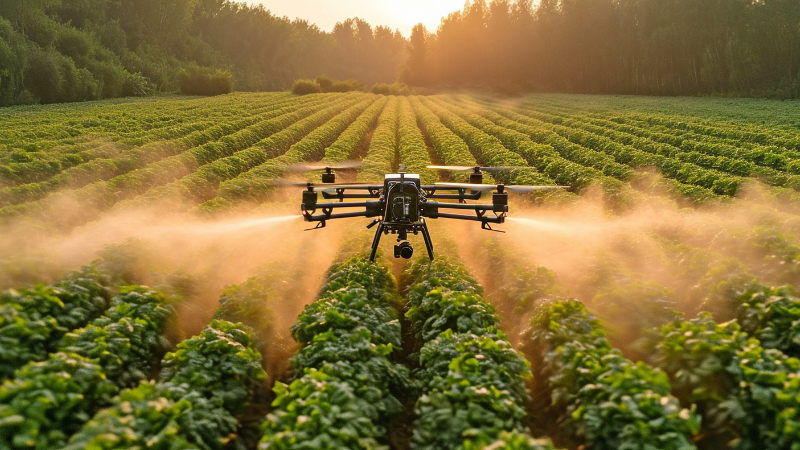

We previously wrote an overarching piece on the potential applications of eVTOLs. As a follow-up, we are delving into each industry to see how this technology will overhaul current practices.
So, let us look at farming to understand how companies are using eVTOLs to change the way we grow food.
Since the industrial revolution, little has changed in the way we farm food. Granted, our equipment has modernised, resulting in greater efficiency, but we are largely following the same practices of treating land, planting seeds, and harvesting crops.
But, all that is set to change with the addition of eVTOLs. The most obvious benefit is automation, particularly of long-winded and repetitive tasks. One company addressing this issue is Guardian Agriculture, an American company focusing on crop protection.
Guardian’s autonomous drone will help spray crops as a replacement for traditional crop-dusting aircraft. The company believes its drone will improve efficiency by up to 20 per cent. Also, its system includes data analytics to monitor performance.
Another eVTOL addressing this niche is the VertiPod IV, a multicopter drone with a maximum payload of 68kg. It will be suitable for crop dusting, haulage and logistics, and other farming-related activities. The base model can be fitted with a sprayer depending on the intended task.
Coming at the farming industry from a different angle is Quantum Systems. It plans to address the issue of mapping potential farmland, particularly in difficult to reach areas. The company used its eVTOL UAVs to map plantation areas in Northern Sumatra, demonstrating a successful use case scenario.
In future, this technology could find use across the world. While it may be less applicable in certain countries, it could adapt to other industries, such as carbon sequestration projects.
The main benefits of using eVTOLs in farming are improved efficiency and reduced cost. If a farmer can automate a previously manned project, they can save on wage costs, among others. Similarly, using a device capable of analysing its own data and improving performance based on this will potentially be far more efficient than manned activities.
Farming is an industry with low profit margins, so many farmers look for ways to get ahead of the competition. For this reason, eVTOL adoption should be fairly successful, providing it addresses actual needs.
However, there are some drawbacks. The most obvious relates to money: eVTOLs are expensive, and it may be difficult for a farmer to justify investing $20,000 in startup money. Seeing a return on investment would take years, if it happened at all.
Also, not all agriculture eVTOLs will be autonomous. This means farmers must either learn to fly them or employ someone who can. Similarly, data requires analysis, and this takes knowledge and skill. Whether this balances against improved efficiency remains to be seen.
Although eVTOL technology has entered the world of farming, it will still be a few years before it becomes mainstream. For this to happen, we will need cheaper, more accessible technology and a better understanding of its real-world application.
However, once it does take off, it could have a major impact on related industries. We may see other aspects of agriculture automated, along with the processing and transport of farmed goods. It might be a long way away, but we look forward to seeing eVTOLs shape the future of farming.